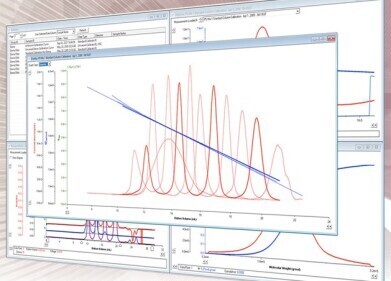Size Exclusion, Gel Permeation Chromatography (GPC)
Taking a Closer Look at Cataracts using Gel Permeation Chromatography
Mar 17 2020
Cataracts are an eye condition that is caused by a build-up of protein in the lens of the eye. This develops cloudy patches in the lens which can affect vision - an initial blurry scene can become misty and sometimes blindness can develop. Quite why this can happen is not fully understood, but some of the risk factors include smoking, diabetes and substance misuse such as long-term steroid use or drinking too much alcohol.
It is also thought that there might be genetic factors that could increase the risk of cataracts developing in later life. Research carried out at Washington University School of Medicine in St Louis, USA has investigated the relationship between α-crystallin and creatine kinase to try and understand more about the formation of cataracts - and gel permeation chromatography played a role in understanding more about how cataracts may form in the eye.
Crystallin to keep the eyes clear
Crystallin is a major component of the lenses in our and other mammalian species eyes. It is a protein that helps to keep the lenses clear. There are three types of crystallin found in the eye and they are classified based on the order of elution from a chromatography column. They are called alpha, beta and gamma - but it is α-crystallin that is considered the most important for the lens.
A mutation in the α-crystallin protein has been linked with cataract formation in one family who all had the mutation. But it is also thought that destabilization of crystallin proteins by UV exposure, glycation and oxidative stress may also play a role in cataracts forming.
GPC looking for cloudy complexes
The genes responsible for the mutations have been identified and mouse models based on the mutations have been developed. In the research mentioned above, the team were interested in the relationship between an enzyme - creatine kinase - and α-crystallin. Creatine kinase is an energy storage enzyme that plays a key role in energy metabolism.
Using model mice, the team found that creatine kinase and α-crystallin formed water soluble complexes that they analysed using gel permeation chromatography. The analysis of proteins is the subject of the following article, Uniform and Reliable Magnetic Beads for Protein Immunocapture Workflows. The team report that the interaction between α-crystallin and CK is functionally important and that increased CK levels may be necessary to meet the increased ATP demands of ATP-dependent functions in cataractous lenses.
Events
Jan 20 2025 Amsterdam, Netherlands
Feb 03 2025 Dubai, UAE
Feb 05 2025 Guangzhou, China
Mar 01 2025 Boston, MA, USA
Mar 04 2025 Berlin, Germany













